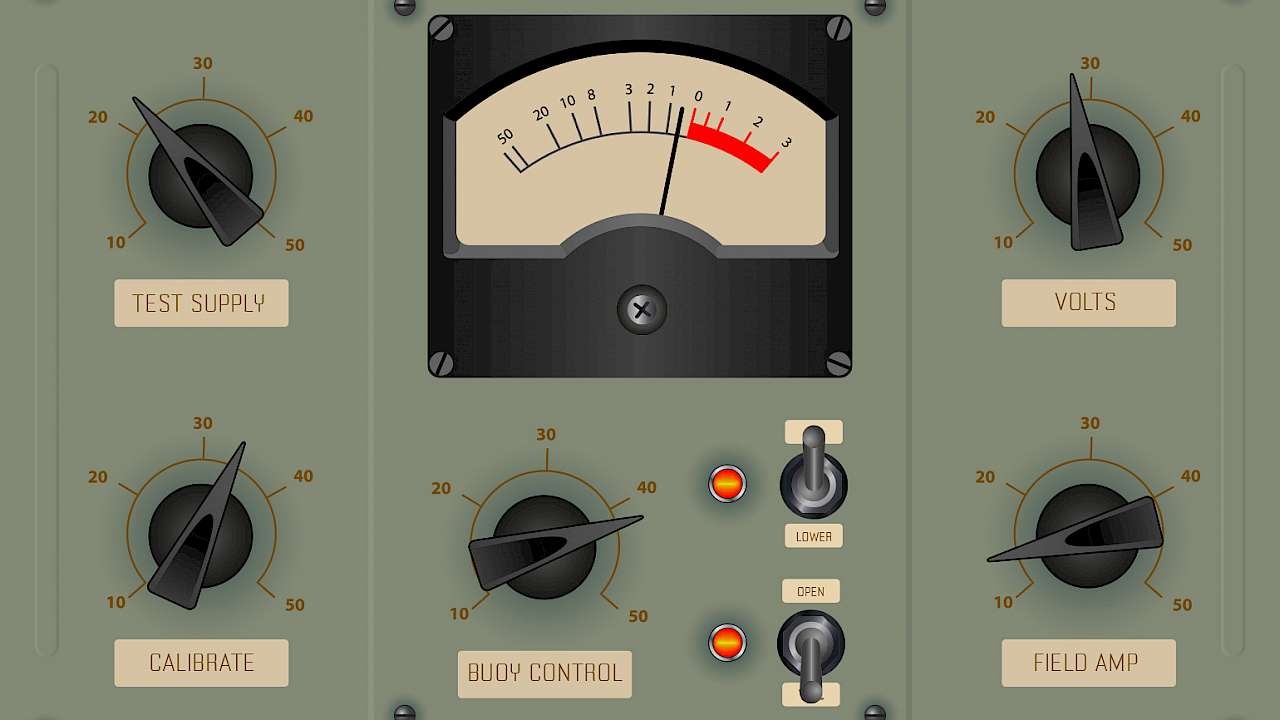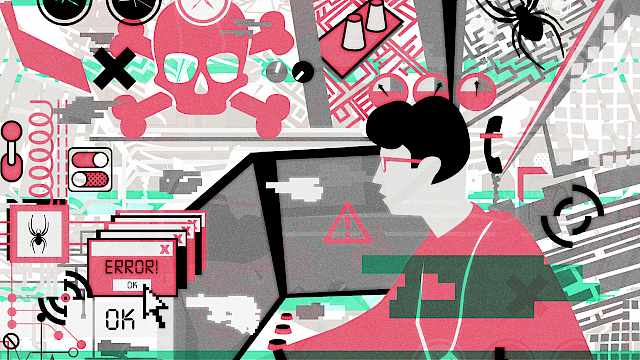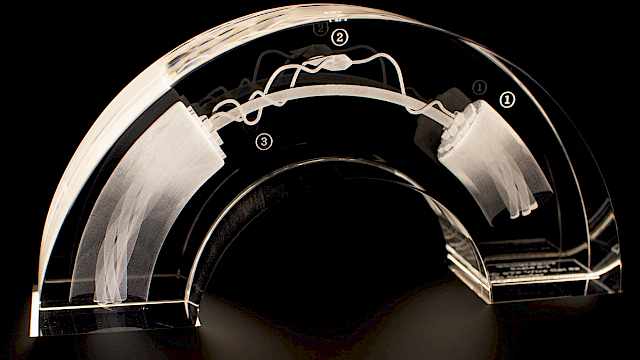Aaron Roberts and Neville Stanton explore resilient information flow through complex sociotechnical systems based on research conducted in dynamic submarine control rooms.
What is 2 + 2? This question is relatively simple for most children, let alone adults. The cognitive effort required to generate a solution for a simple sum (2+2) is relatively small. It is, therefore, reasonable to expect that such processing can be completed inside the mind of an individual.
However, when generating a solution to a significantly more complex mathematical problem, individuals will often utilise supportive technologies, such as a calculator. It may also be beneficial to divide the work into sub-components, so that a team of mathematicians may contribute to the overarching aim of providing a solution. This can increase efficiency and timeliness, particularly if the allocation of tasks maximises the skills and training of individuals within the team.
At this level, processing is no longer completed solely in the mind of an individual. Instead, cognition is distributed across multiple agents in a system, these can be both human and technological.
In complex sociotechnical systems, the utilisation of supportive technologies by teams of operators increasingly becomes a necessity rather than an option, as data and information processing requirements are so large.
In order to promote shared understanding at the level of the team in these environments, the transition of data to information to knowledge at the level of the individual (e.g. Human-Machine-Interface) is as critical as the co-ordination or flow of information between human operators (e.g. verbal and non-verbal communication). To investigate how such systems might be optimised it is important to conduct research from a sociotechnical perspective. This can reveal how technologies, human operators and interactions between the two might be optimised to create systems that are more resilient to changing demands and operational requirements.
The Command Team Experimental Testbed (ComTET)
A submarine control room is an exemplar of a complex socio-technical system. It requires a command team to process and synthesise vast amounts of data from disparate sensors such as sonar and periscope, utilising various technological support. The ComTET project is a program of work tasked with documenting contemporary submarine command team operations and the completion of multiple studies to provide evidence-based recommendations for future design concepts.
To achieve such aims a mid-fidelity submarine control room simulator was constructed at the University of Southampton. The work we have completed to date has included an examination of system performance using the Event Analysis of Systemic Teamwork (EAST) method. This network approach has provided insights into patterns of communication between operators in the control room, the type of information getting passed and the connectivity between sub-tasks being completed.
Examination of contemporary ways of working has revealed bottlenecks of information flow across the control room. This resulted in a temporal lag for the transition of critical information between operators in the control room and a loss of information as it was passed between multiple operators, leading to a reduction in overall task productivity. We found this to be particularly evident in high demand scenarios when the command teams had more vessels (which had less predictable behaviours) to process.
This finding has promoted a data-driven re-design of submarine control room configurations, ways of working, workstation interfaces and task allocation using a variety of Human Factors methods. A series of further studies have revealed that new designs did indeed reduce information flow bottlenecks which improved command team capacity and overall productivity.
We made a number of key recommendations which included: co-locating operator’s dependent on each other for task-relevant information; the design of more intuitive interfaces, with the capacity to overlay data from multiple sensors, aligned with relation to operationally relevant information; and the design of control rooms of the future that are more adaptable with regard to configuration, information presentation and crewing. These recommendations can create greater system resilience as command teams can react to specific operational demand, increasing overall productivity.
Across domains and modalities
Neville Stanton has examined sociotechnical systems across many domains including energy distribution, driving, emergency services and various military domains. In recent work, he extended the EAST method to a case study based on UK Royal Navy training that uses Hawk jets to simulate missile attacks against ships. He examined how breaking ‘links’ in social, task and information networks revealed risks within the sociotechnical system in this simulation.
This provided an understanding of resilience and susceptibility to operational risks from a systemic rather than taxonomic perspective. It further highlighted the importance of effective information transition across the system with the vast amount of information passed between operators being verbal in nature.
Aaron Roberts has examined the cognitive function of Authorised Firearms Officers during the completion of simulations involving weapon discharge. It was found that the demand for such encounters led to changes in cognitive function which resulted in the more effective processing of visual information but a decline in the capacity to process information that is phonological in nature.
A decrease in phonological capacity can lead to less complex, more monosyllabic and potentially more error-prone use of language. The modality of information presentation typically differs within sociotechnical systems across many domains.
It is important that socio-technical system design and the development of accompanying training and policy considers the capacity of operators within the context of the wider system at the time that high impact decisions are made. In many domains, there is a high reliance on verbal communication to develop knowledge at the level of the team. Examination of alternative means of saliently communicating critical information (e.g. visual, haptic, and olfactory) could improve system resilience, particularly during highly demanding situations when the capacity to talk and listen can be diminished.
Read more
- HFE group website and publications list: http://www.hfesoton.com
- Aaron Roberts and Jon C. Cole. 2018. ‘Naturalistic Decision Making: Taking a (Cognitive) Step Back to Take Two Steps Forward in Understanding Experience-Based Decisions’. Journal of Applied Research in Memory and Cognition 7 (1): 70–81. Available at: https://eprints.soton.ac.uk/418983/
- Aaron Roberts and Neville A. Stanton. 2018. ‘Macrocognition in Submarine Command and Control: A Comparison of Three Simulated Operational Scenarios’. Journal of Applied Research in Memory and Cognition 7 (1): 92–105. Available at: https://eprints.soton.ac.uk/419006/
- Aaron Roberts, Neville A. Stanton, and Daniel Fay. 2017. ‘Land Ahoy! Understanding Submarine Command and Control During the Completion of Inshore Operations’. Human Factors 59 (8): 1263–88. Available at: https://doi.org/10.1177/0018720817731678.
- Neville Stanton and Aaron Roberts. 2018. ‘Examining Social, Information, and Task Networks in Submarine Command and Control’. IEEE Transactions on Human-Machine Systems 48 (3): 252–65. Available at: https://eprints.soton.ac.uk/411930/1/THMS_16_07_0322.R3.pdf
- Neville Stanton, Paul M. Salmon, and Guy H. Walker. 2015. ‘Let the Reader Decide: A Paradigm Shift for Situation Awareness in Sociotechnical Systems’. Journal of Cognitive Engineering and Decision Making 9 (1): 44–50. Available at: https://www.researchgate.net/publication/319177883_Let_the_reader_decide_A_paradigm_shift_for_situation_awareness_in_sociotechnical_systems.
- Neville Stanton and Catherine Harvey. 2016. ‘Beyond Human Error Taxonomies in Assessment of Risk in Sociotechnical Systems: A New Paradigm with the EAST “broken-Links” Approach’. Ergonomics 60 (2): 221–33. Available at: https://eprints.soton.ac.uk/407898/
Copyright Information
As part of CREST’s commitment to open access research, this text is available under a Creative Commons BY-NC-SA 4.0 licence. Please refer to our Copyright page for full details.







